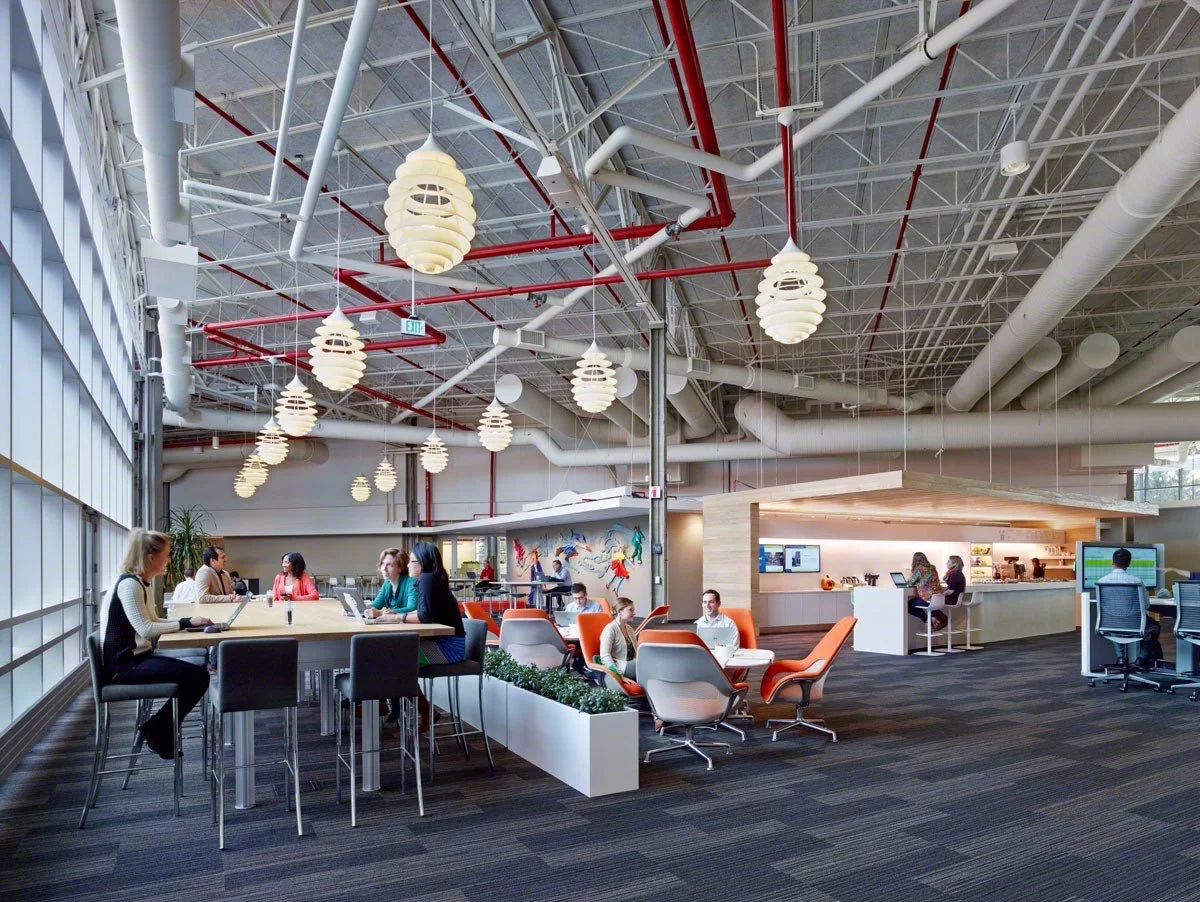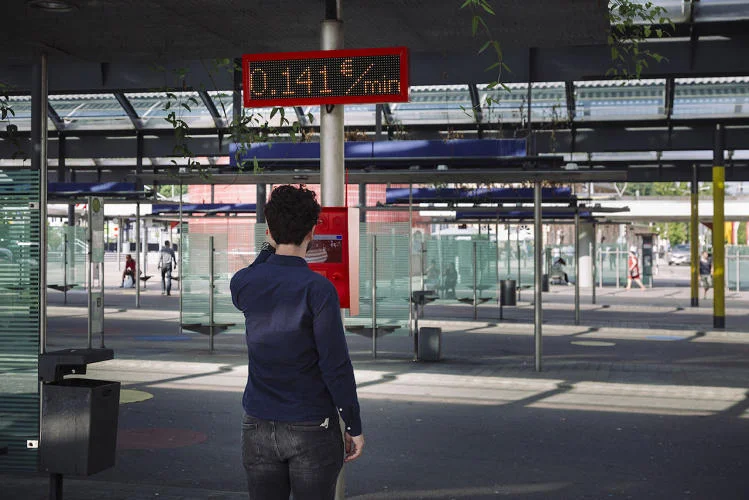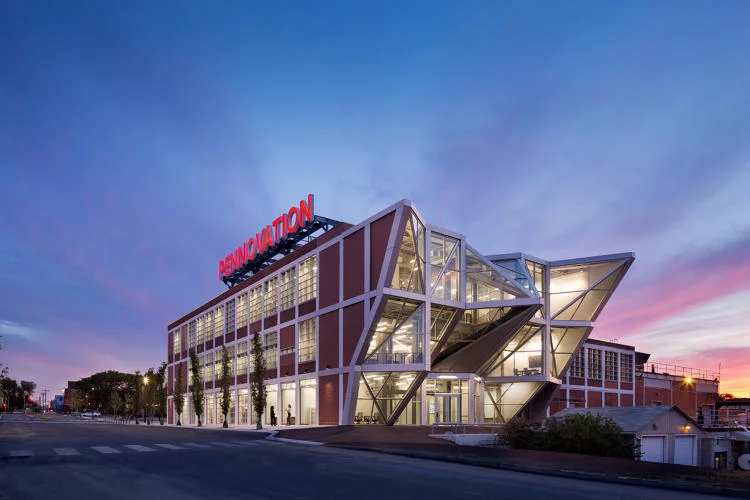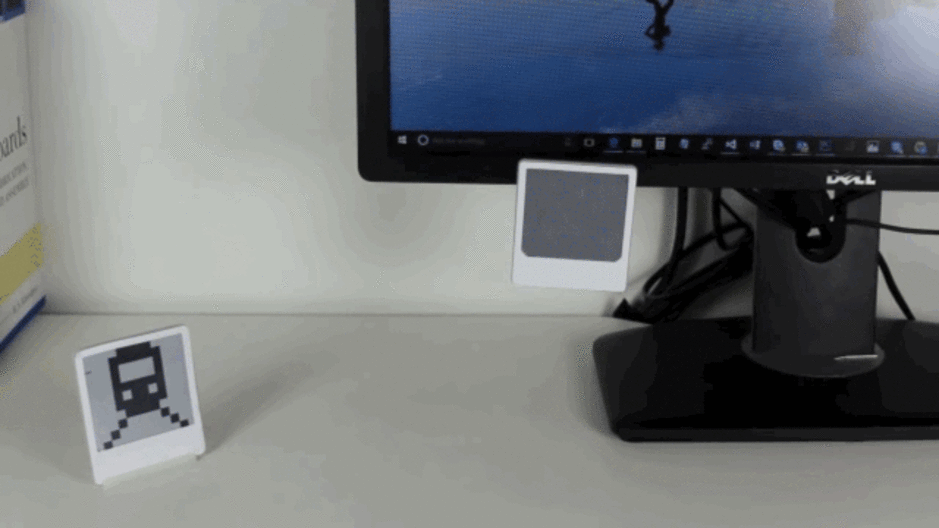There is a witch hunt on in the workplace. “Open plan” has become a dirty word and the national press are leading the mob in vilifying this so-called scourge. The Guardian, The Independent, The Telegraph, The Daily Mail and Business Week have all reported that “we can’t get anything done in an open-plan office” as it affects our concentration, our performance and our health. These news items are all damning, but perhaps not as damming as the Wikipedia entry on open plan which states: “A systematic survey of research upon the effects of open plan offices found frequent negative effects in some traditional workplaces: high levels of noise, stress, conflict, high blood pressure and a high staff turnover… Most people prefer closed offices… there is a dearth of studies confirming positive impacts on productivity from open plan office designs”.
Design Leveraged Confirms Link Between Workplace Design and Employee Satisfaction
The International Interior Design Association (IIDA) and the Business and Institutional Furniture Manufacturers Association (BIFMA) have released Design Leveraged, Volume II, the second in a three-part series, which makes the case that good design makes a meaningful impact on employee satisfaction and has a positive effect on a company's bottom line. The report highlights new survey findings that provide commercial interior designers with the hard data they need to demonstrate the ROI of an office redesign to C-level executives. More than 1,200 U.S.-based office workers participated in the survey, which showcases the stark differences between employees who are satisfied with their workplaces versus those who are not.
3 Workplace Trends Millennials Are Eliminating in 2017
The American workforce has never been more diverse, with generations spanning from Baby Boomers to Gen Xers and beyond. In recent years, however, Millennials (adults ages 19 to 35) have driven the biggest transformation in workplace dynamics. Experts and studies, for instance, tout how the Millennial generation is more collaborative than others and has a strong preference for remote work options. Additionally, Millennial workers are more connected and prefer to use technology to interact and get work done.
Why do these insights matter more now than ever before? According to an analysis from Pew Research Center, more than 30 percent of American workers today are Millennials. They recently surpassed Generation X in becoming the largest share of the American workforce. As more Baby Boomers retire, more and more Millennials will be stepping up to fill management roles.
With Millennials moving into leadership positions, and an even younger generation (Generation Z) preparing to enter the workforce, we predict there will be significant changes in office dynamics and operations starting in 2017, and lasting well into the coming years.
Is there gender bias in office design?
Your company’s office layout might be unfair to women, reports Fast Company. A "Women in the Workplace" study by LeanIn.org and McKinsey & Co. suggests that the squared off, segmented space that describes most office layouts favors the hierarchy working style men prefer. Women, by comparison, work best in open spaces, which they view as more congenial.
How to prepare for workplace changes brought on by millennials and Gen Z
Just when we feel we finally have a handle on millennials’ workplace preferences and technology needs, a new predicament pops up.
They are becoming managers — and they aren’t prepared.
At the same time, the oldest of their successors, Generation Z, are beginning to enter the workforce.
Are we prepared to readjust all over again?
According to a recent Randstad global study, one of the top things that millennials feel their educations did not prepare them for is managing other people. Randstad’s Gen Z & Millennials Collide @ Work research also uncovered that this group finds corporate politics to be one of the biggest obstacles to effective working.
Those of us who manage a team know quite well that navigating the latter is a vital component to effective leadership, and this gap can certainly inhibit millennials’ success.
Frog's 5 Steps To Predicting The Future
People everywhere wish they could look into a crystal ball and see their future—or at the very least, the future of their investments, business, and career. Frog, the global design consultancy, has developed a technique that’s probably about as close as we’ll get to prophecies told via glass orb.
It’s called "futurecasting." And Frog’s clients hire the design firm to spend weeks or months evaluating how the world may change, and what new products and services may be needed as a result. It’s essentially a disruption simulator. The system involves lots of research as to where things are headed, envisioning worlds that may embody such trends, and even writing fictional headlines that flesh out the possibilities.
Why Human Dynamics Are Key to Workspace Design
The office watercooler days are long gone, and in its place are platforms like Slack, Toggle, and Facebook Messenger. With the rise of our increasingly mobile and connected relationships comes new ways of working. If we take a moment to look around us in any urban city, we’ll see the future of work all over: at our local coffee shop, brimming with entrepreneurs dialing clients, on the sidewalks, where teams are taking their walking status meeting, across open-office spaces, where employees roam freely. With these new standards for office culture, creating opportunities for professional relationships to develop and collaboration to occur is more integral than ever to an organization’s success.
According to a Google For Work Study released in 2016, 73% of employees think their organization would be more successful if they were able to work in a more flexible and collaborative way. As the needs and expectations of employees continue to evolve, companies are building and protecting spaces—virtually and in the office—to help colleagues connect, offer mentorship, and share expertise.
Green offices can ‘boost workplace productivity and cut costs’
Businesses could massively increase productivity in the workplace by improving office design.
Air quality improvement, natural light and more spacious office buildings can have a significant impact on the health, well-being and productivity of its occupants, according to the World Green Building Council.
That can have a positive impact on a company’s bottom line by improving employee productivity and reducing absenteeism, staff turnover and medical costs.
For example, indoor air quality is improved when low volatile organic compound (VOC) materials are used in offices and the life cycle environmental impact of low VOC materials are lower than traditional materials. Increased daylighting reduces electrical loads, which helps reduce greenhouse gas emissions, the report states.
The Genesis of ideation and the places we go to have our best ideas
Because collaboration, creativity and innovation are increasingly perceived as key objectives and differentiators of performance, the genesis and mechanisms behind ideation and creativity are an an integral part of both business and personal development. As a consequence, there is growing interest in the way the physical attributes of work settings may influence or even trigger creative behavior. The cliché of the shower as one of these favorite places comes to mind and yet experience does show that the idea of seeking a setting, a “zone” if you will, for a specific purpose is intuitively right. This needn’t be a retreat or cocoon, as is often assumed, but can also be a crowded, busy, noisy place, which might explain why so often the most animated work conversations move out of the office shop into the coffee shop. Equally, highlight events or special meetings tend to be held in a “venue’, often dressed for the occasion.
Workplace design can help workers feel happier says new report by Haworth
Haworth white papers: the right office design can increase the happiness of employees, whereas ping-pong tables, slides and even pay rises can't, according to new research by Haworth.
The findings are contained in a new white paper launched by the office furniture giant at the Orgatec workplace design fair in Cologne last week.
"Our research shows that there are specific design elements you can use to help workers feel happier," said Michael O'Neill, Haworth's head of research. "That's what the data is saying."
The report is the latest in a series of white papers by US company Haworth exploring office design.
Flexibility in the Workplace: A ConocoPhillips Case Study
Earlier this August, I was part of a panel discussion and tour of ConocoPhillips’ most recent 500,000-SF facility in Houston, TX in the Energy Corridor as a part of CoreNet. The panel included the developer and two key ConocoPhillips team members involved in the initiative and implementation of the consolidation.
Learning from my design peers is such a fascinating way to keep abreast of all the information that is constantly being exchanged in the industry. This panel was no exception. In the discussion of this new development, we went in depth to look at one of the key drivers in the current workplace industry.
This key driver was flexibility.
FOUR KEY THEMES FROM THE CORENET GLOBAL 2016 NORTH AMERICAN SUMMIT
Each year, CoreNet Global’s North American Summit brings together the best minds in the corporate real estate world to share experiences and learn from one another. Held October 16-19 at the Philadelphia Convention Center, this year’s theme was “The Bigger Picture: Geopolitics, Economics and the Environment.” Opening and closing with inspirational speakers and filled in with extensive sessions on a broad array of topics and myriad networking opportunities, the conference is a favorite among end users and service providers alike.
STATE OF THE A&D INDUSTRY SURVEY RESULTS
The workplace is undergoing rapid changes and A&D firms are right at the center of it. As drivers of innovation, A&D firms are charged with satisfying their clients’ desires to incorporate all of the latest trends, now. In order to deliver meaningful solutions, new resources, and more impactful content, we teamed up with AgilQuest to better understand the state of the A&D industry today.
Who we surveyed
The majority of our 312 survey takers work in large firms. Twenty-six percent hail from firms of 250 or more, and over 63 percent of respondents work in firms of 30 or more. Responses from A&D professionals in firms of less than 30 clocked in at 23 percent.
To better understand the scope of their current work, we asked the respondents about their client base. Results showed that they primarily work with clients who have multiple locations, as opposed to 24 percent of survey takers who work mostly with clients in single locations.
VIDEO: Redesigning The Controversial World Of Crowdwork
Crowdworking, where small tasks that computers can't handle are outsourced to human workers online, is one way to teach algorithms how to recognize faces, places, and context. And with machine learning on the rise, crowdwork is only going to become more common. So is it the bellwether of a dystopian future, or the democratization of labor?
Two-thirds of British workers more productive working in the office
Despite half (50 percent) of the British workforce saying they are equipped with the right tools and technology to enable them to work anywhere, half (50 percent) of respondents to a new survey stated that remote working can make them feel stressed, isolated or lonely (43 percent) and over half (53 percent) said that working out of the office makes them feel disconnected from colleagues. The survey from Peldon Rose, found that two-thirds (66 percent) of British workers say they work most productively in the office compared with a quarter (26 percent) who work most productively at home. The survey results also underline how vital close working relationships with colleagues are to employees’ happiness, wellbeing and productivity with nine in 10 (91 percent) of office workers stating they value their friendships within the workplace and 80 percent crediting their friendships with colleagues with helping them to be more productive at work – something they feel boosts their productivity even more than personal technology (66 percent).
Can A Building Engineer Innovation?
Innovation is a buzzy thing in architecture today. It's nearly impossible to avoid projects that claim to be purpose-built to spark the invention of new ideas, from individual buildings to campuses to entire city districts. But can you actually engineer innovation? Is it something that can be designed, or is this just another clever real estate marketing tactic?
The recently completed Pennovation Center in Philadelphia is the latest to be admitted into the Innovation Architecture Class. A renovation of a former factory, the project anchors the University of Pennsylvania's 23-acre Pennovation Works district, an area of the campus specifically designed to be the site where the next big thing is invented—and turned into a business.
Microsoft's Digital Post-It Is Powered By Your Office’s Horrible Lighting
Offices are littered with Post-it notes. Some argue for their greenness, others aren’t so convinced. But in any case, a tiny reusable display might make a better alternative in the long term—if only it didn’t require any extra power. And it so happens, scientists at Microsoft Research have developed just that.
Featured in New Scientist, and dubbed an "energy harvesting situational display," Microsoft's invention is a Post-it sized chunk of e-paper, the same stuff used in Amazon's Kindles. And simply through some solar panels placed on the display’s back, it can generate enough electricity to not only run continuously simply by sipping on the ambient light inside an office, but to actually update its display anywhere from two to sixty times per hour, depending on light levels.
Workplace Strategy Isn’t Just For Large Companies
The elements of mobility, wellness, choice of space, amenities and technology are universal to all size companies, CBRE’s managing director Paul Komadina tells GlobeSt.com. He says that today’s workplace experience is transforming, and CBRE’s workplace-strategy services are a value-add to tenants, are scalable and help create an environment that will attract and retain a talented workforce.
Americans Work 25% More Than Europeans, Study Finds
Americans are addicted to their jobs. U.S. workers not only put in more hours than workers do almost anywhere else. They’re also increasingly retiring later and taking fewer vacation days.
A new study tries to measure precisely how much more Americans work than Europeans do overall. The answer: The average person in Europe works 19 percent less than the average person in the U.S. That’s about 258 fewer hours per year, or about an hour less each weekday. Another way to look at it: U.S. workers put in almost 25 percent more hours than Europeans.
IIDA DESIGN WATCH: WHAT WILL THE WORKPLACE BECOME?
Work as we know it has shifted. With evolving demographics, immersive technology, globalization, and the blur between our personal and professional lives, what endures and what doesn’t? IIDA Executive Vice President and CEO Cheryl S. Durst, Hon. FIIDA, LEED AP, shares her insights on the top topics in workplace design today, the challenges designers face with an ever-changing workforce, and the workplace as the next level of education.

























